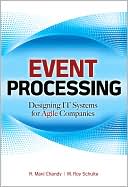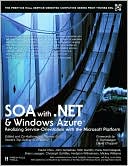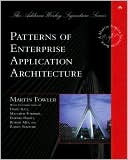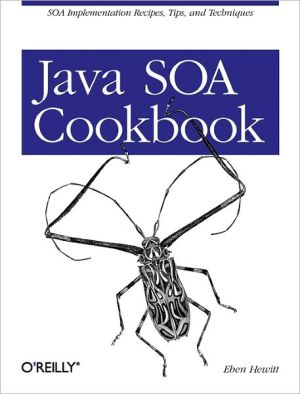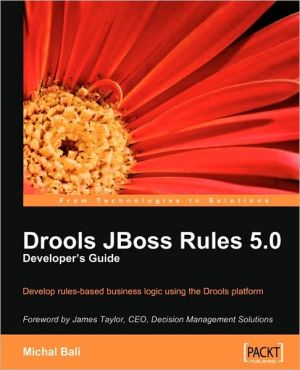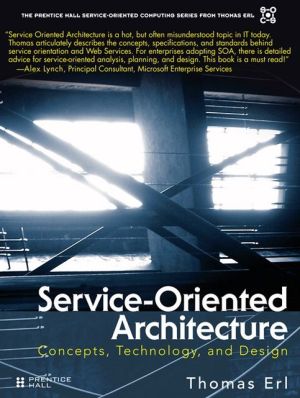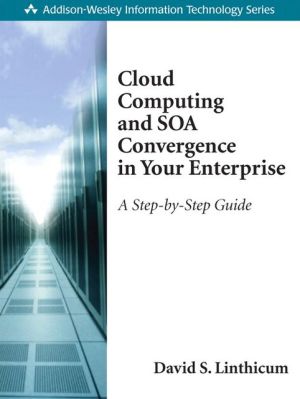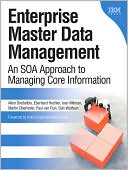Event Processing: Designing IT Systems for Agile Companies: Designing IT Systems for Agile Companies
Search in google:
Event processing has the power to transform businesses by providing near real-time visibility into what is happening within a company and in its external environment. This situation awareness improves reaction time to emerging threats and opportunities, reduces the elapsed time of business processes, and enhances the quality and availability of information.Written by K. Mani Chandy, computer science professor at the California Institute of Technology, and W. Roy Schulte, Vice President and Distinguished Analyst at Gartner, Inc., this authoritative guide explains the principles, reference architectures, design patterns, and best practices of event processing. Event Processing: Designing IT Systems for Agile Companies discusses the business drivers, costs, and benefits of event-processing applications. The book covers complex-event processing (CEP) and event-driven architecture (EDA) and describes how service-oriented architecture (SOA) and EDA are used in application integration scenarios. You will find proven strategies for integrating events into business applications and enhancing business process management (BPM) initiatives with event processing. This practical resource contains a sequence of steps in which to develop event-processing applications to reduce risk and ensure efficiency. If you want to vastly improve your company's timeliness, agility, information availability, and strategic advantage, you need Event Processing: Designing IT Systems for Agile Companies.K. Mani Chandy, Ph.D., is the Simon Ramo Professor at the California Institute of Technology in Pasadena, California. He has received numerous awards including the CMG Michelson Award, the IEEE Kobayashi award, and the Babbage Award. Dr. Chandy is a member of the U.S. National Academy of Engineering.W. Roy Schulte Vice President and Distinguished Analyst at Gartner Inc. He was the lead author of the 1996 Gartner report that introduced the term SOA. Mr. Schulte originated the research in the field of message brokers, coined the term business activity monitoring (BAM), and wrote the first analyst reports on the zero-latency enterprise and the enterprise service bus (ESB). Mr. Schulte is a member of the Event Processing Technical Society steering committee.
Introduction xiiiAcknowledgments xviiChapter 1 Event Processing Overview 1Introduction to Events and Event Processing 1Business Context 2Summary 8Chapter 2 Event-Processing Patterns in Business 9Categories of Business Drivers for Event Processing 9The Basic Action: An Interaction 14Time-, Request-, and Event-Driven Interactions 16Contracts: Formalization of Shared Expectations 24Hybrid Systems: Combinations of Interaction Types 27Summary 31Chapter 3 Using Event-Processing in Business Applications 33Event-Driven Architecture 33Complex Event Processing 43Summary 53Chapter 4 Costs and Benefits of Event-Processing Applications 55Exploiting Events for Business Value 55Relevance 56Effort 58Accuracy 61Completeness 62Timeliness 64Security 67Summary 70Chapter 5 Types of Event-Processing Applications 71Features Driving Demand for Event Processing 71A Framework for Analyzing Which Business Domains Are Suitable for Event Processing 79Summary 89Chapter 6 Event-Processing Architecture 91Application Flow 91Reference Architecture for Event-Processing Networks 94Implementing the Principles of EDA in an EPN 101Summary 109Chapter 7 Events and Complex Events 111Defining "Event" in Earnest 111Designing Events 114Complex Events 117Summary 126Chapter 8 From Architecture to Application 127Role of Notifications in Business Applications 127Transactional Notifications 128Observational Notifications 132Application Architecture Styles 140Summary 148Chapter 9 The Role of Event Processing in SOA and Application Development 149Using Events in SOA 149Action Items forSuccessful Event Processing 157Summary 164Chaper 10 Positioning Event Processing in the IT World 165Events in Business Process Management 165Event Processing in Business Intelligence 171Rule Engines and Event Processing 175Summary 180Chapter 11 Best Practices 181Starting Out 181Pilot Projects 192Best Practices 194Summary 201Chapter 12 The Future of Event Processing 203Solving the World's Problem's One Application at a Time 204Impact on Society 210Barriers and Dangers 211Drivers for Adoption 211Summary 213Appendix A Books and Other Resources 215Books 215Articles and Other Works Referenced in the Text 216Web Resources 217Appendix B Glossary 219Index 227
